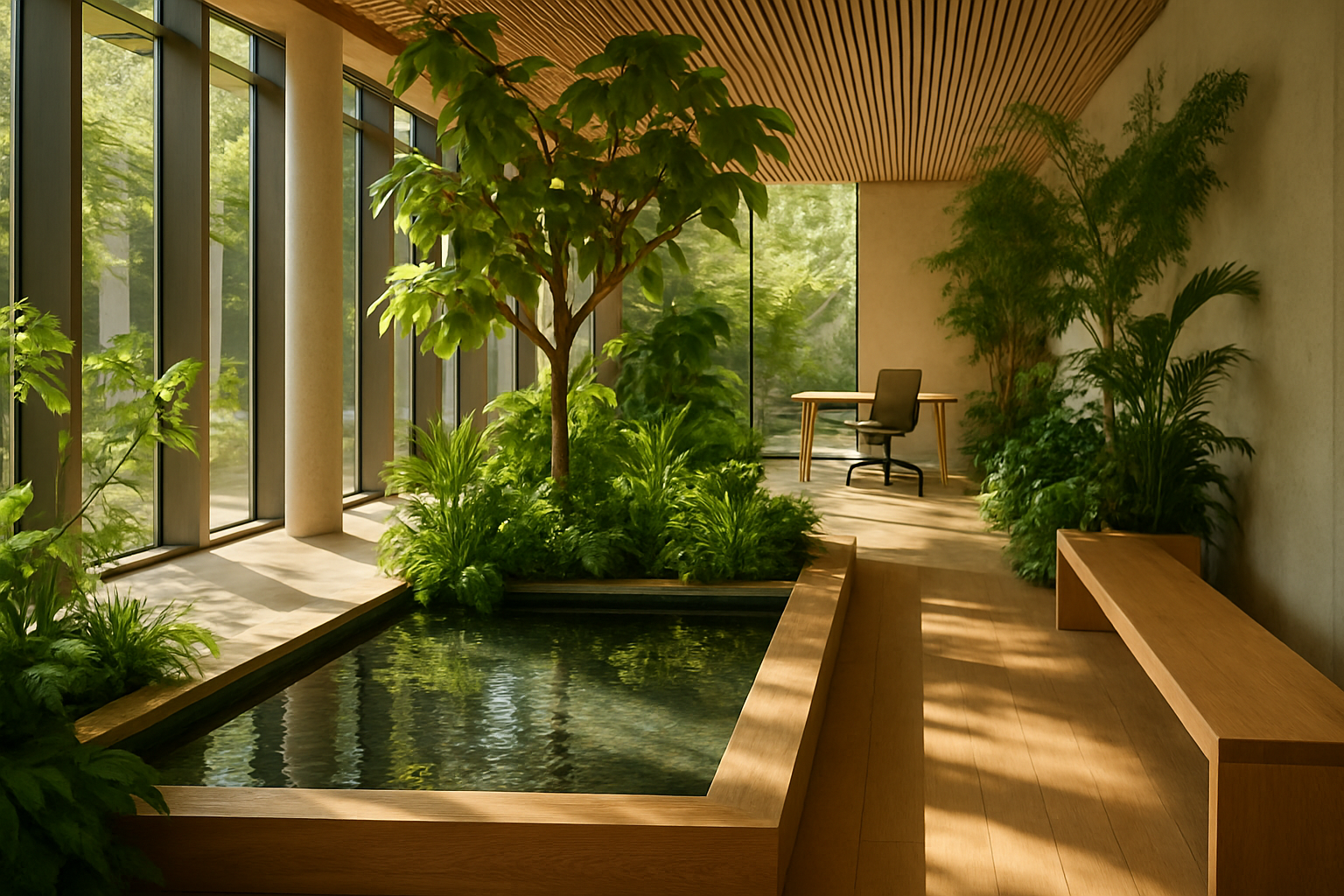Biophilic Design: Revolutionizing Health Through Nature-Inspired Spaces
What if the key to better health and well-being was hidden in the very spaces we inhabit? Imagine a world where our homes, offices, and public spaces are designed to mimic nature, fostering improved physical and mental health. This innovative approach, known as biophilic design, is reshaping our understanding of architecture and its impact on human wellness.

The Origins of Biophilic Design
The term biophilia, meaning love of nature, was first coined by psychoanalyst Erich Fromm in 1973 and later popularized by biologist Edward O. Wilson in his 1984 book Biophilia. Wilson proposed that humans have an innate affinity for nature, developed through millennia of evolution in natural environments. This concept laid the foundation for biophilic design, which emerged in the 1990s as architects and designers began to explore ways to incorporate nature into built spaces.
Early pioneers of biophilic design, such as Stephen Kellert and Judith Heerwagen, conducted research that demonstrated the positive impacts of nature-inspired environments on human health, productivity, and well-being. Their work showed that exposure to natural elements could reduce stress, improve cognitive function, and enhance overall physical health.
The Science Behind Biophilic Design
Recent scientific studies have provided compelling evidence for the health benefits of biophilic design. A 2019 study published in the International Journal of Environmental Research and Public Health found that office workers in biophilic environments reported a 15% increase in well-being, a 6% increase in productivity, and a 15% increase in creativity compared to those in conventional office spaces.
Neuroscience research has also shed light on the mechanisms behind these benefits. Exposure to natural elements has been shown to activate the parasympathetic nervous system, which is responsible for rest and relaxation. This activation leads to decreased heart rate, lower blood pressure, and reduced levels of stress hormones like cortisol.
Additionally, biophilic design elements can improve air quality by increasing oxygen levels and reducing indoor air pollutants. A study by NASA found that certain plants can remove up to 87% of air toxins within 24 hours, contributing to improved respiratory health and cognitive function.
Key Elements of Biophilic Design
Biophilic design incorporates several key elements to create nature-inspired spaces:
-
Direct nature connections: This includes the integration of plants, water features, and natural materials like wood and stone.
-
Indirect nature references: Using patterns, colors, and textures that mimic natural forms and processes.
-
Human spatial responses: Designing spaces that evoke feelings of refuge, prospect, and exploration, similar to natural environments.
-
Natural light and ventilation: Maximizing exposure to daylight and fresh air to support circadian rhythms and improve air quality.
-
Sensory variability: Incorporating subtle changes in light, temperature, and air movement to mimic natural environments.
Implementing Biophilic Design in Various Settings
Biophilic design principles can be applied to a wide range of settings, each with unique benefits:
In healthcare facilities, biophilic elements have been shown to reduce patient recovery times, decrease pain perception, and improve overall patient satisfaction. A study at Khoo Teck Puat Hospital in Singapore, which incorporates extensive greenery and natural light, found that patients required 20% less pain medication compared to those in traditional hospital settings.
Educational institutions that implement biophilic design have reported improved student performance and reduced absenteeism. A study of 751 pupils in the UK found that classroom design incorporating natural elements could improve learning progress by up to 16% in a single year.
In the workplace, biophilic design has been linked to increased productivity, creativity, and job satisfaction. Companies like Amazon and Google have invested heavily in biophilic office spaces, recognizing the potential for improved employee well-being and performance.
Residential applications of biophilic design can lead to better sleep quality, reduced stress levels, and improved overall health. Simple interventions like increasing natural light exposure and adding indoor plants can have significant impacts on home environments.
Challenges and Future Directions
Despite its proven benefits, the widespread adoption of biophilic design faces several challenges. Initial costs can be higher compared to conventional design approaches, although long-term benefits often outweigh these expenses. There’s also a need for more research to quantify the specific health impacts of different biophilic elements and to develop standardized guidelines for implementation.
Looking ahead, the future of biophilic design is promising. Advancements in technology, such as smart building systems that can mimic natural light patterns and air movement, are making it easier to incorporate biophilic elements into a wide range of spaces. Additionally, growing awareness of the importance of environmental sustainability is driving interest in nature-inspired design solutions.
Biophilic Design: Practical Tips for Healthier Spaces
-
Maximize natural light by using sheer curtains and strategically placed mirrors
-
Incorporate indoor plants, aiming for at least one plant per 100 square feet of space
-
Use natural materials like wood, stone, and bamboo in furniture and decor
-
Install a small water feature, such as a tabletop fountain, to add the soothing sound of flowing water
-
Choose artwork depicting natural scenes or incorporate nature-inspired patterns in textiles and wallcoverings
-
Create a vertical garden or living wall to maximize green space in small areas
-
Use organic shapes and forms in furniture and architectural elements to mimic natural structures
-
Implement circadian lighting systems that adjust color temperature throughout the day to support natural sleep-wake cycles
As we continue to spend more time indoors, the importance of creating healthier, more nature-connected spaces becomes increasingly apparent. Biophilic design offers a promising approach to improving our built environments and, consequently, our overall health and well-being. By reconnecting with nature through thoughtful design, we can create spaces that not only look beautiful but also actively contribute to our physical and mental health. As research in this field progresses, we can expect to see biophilic principles becoming an integral part of architecture and design, shaping a healthier, more sustainable future for our built environments.





